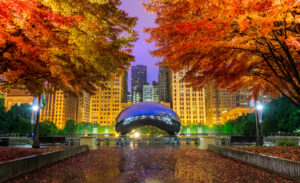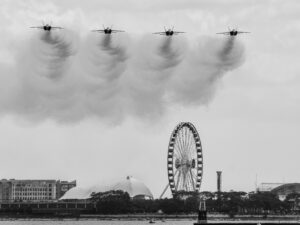
Bad Weather Photography

BLOG PROVIDED From Jake McCluskey
How should I use my camera? In the rain and snow? In days of old I used underwater cameras when I was in heavy rain or snow.
Nikon made a camera called “Nikonos”; it used film and in later model years also had a pretty good exposure meter. The “fixed focal length” lenses were among the sharpest lenses I ever used. I never used them under water because I don’t swim.
In this new digital world there is no camera manufacturer that makes underwater cameras. You can buy very expensive underwater “housing’s.” I’ve never trusted them but I don’t need to use them for my work. I just don’t trust equipment until after I have experienced it.
The truth is that unless you’re in a hurricane, an ice storm or snow storm, you usually don’t need such specialized cameras and housings. Yes, you can use your expensive digital camera in rain and snow with just some ‘common sense’ precautions.
The camera manufacturers make a very big deal about how their cameras are well sealed from dust. Lets think about that: Is a drop of water bigger or smaller then a speck of dust? Do not “dunk” your digital camera into a bucket of water or the tub! 😉
If your camera were to drop into the snow or into a deep puddle for a few seconds, don’t panic. How many seconds?, try to keep it under 60. The first thing to do is turn the camera off and immediately remove the battery. Water can conduct electricity and you want to try to prevent the circuits from shorting out.
Inspect the camera and remove any water that might be standing on the surface. Dry the camera off, inspect the battery compartment for any moisture. If you have a can of compressed air, put the tip into the creases of the camera and blow the air to see if any moisture escapes. If not, that’s good; be happy. Put a dry battery into the camera and while looking at the LCD screen, turn the camera on. If you see an error code on the screen, turn off the camera and remove the battery immediately. Go to Plan B (see below).
If you don’t see an error code, try to take a picture. If the camera works, than inspect the image to see if there are any water marks on the image. If there are no water marks on the sensor than you may have dodged the bullet. Pay close attention to how the camera works to see if there are any delayed problems, if not, don’t worry. Be happy. If there are problems, take the battery out and go to Plan B (see below).
Plan B. (CPC Does not support putting your camera into an oven to dry!)
This is going to sound weird, unless you know me. I have done this with good result. Set the thermostat on your kitchen stove to about 110 degrees. After you remove the battery, place your camera on the center rack for 7 hours if it’s a Canon and 8 hours if it’s a Nikon. 😉
The idea is to try to evaporate any moisture that might be in the camera. At 110 degrees, the oven is not hot enough to melt anything and the hours should allow any moisture to evaporate. If the camera does not work then you should send the camera to the manufacturer’s repair facility. I would just tell them the camera stopped working and see what happens. Do not trust an independent repair facility for this kind of repair.
If you drop your camera in salt water, there may be nothing you can do to save it. See if your camera is covered by your apartment or home owner’s insurance. If you don’t have any insurance than never leave the house again and only photograph the outside through closed windows. 😉
So much for “worse case” scenarios. Let’s talk about “most of the time” scenarios. I have what most people call, in polite company, a barrel chest. I also have referred to it as a “beer belly,” even though I don’t drink.
I walk around most of the time with my jacket or coat open in the front. When photographing in bad weather putting the camera around your neck and letting it hang in front of you is just fine. With your coat open, the coat will provide enough cover to protect the camera and lens. If the rain or snow is coming down so hard that you have to close the front of your coat than you will also protect your camera.
Some people use zip lock bags or buy expensive “armor” covers for their cameras. I find that negotiating the use of the camera through that kind of stuff, is tedious and slows me down. Remember we are always looking for those “perfect moments” and anything that gets in the way of using the camera gets in the way of getting the shot.
Most of the time caution and common sense will be all you need to protect your camera. If you’re protecting yourself, you will also be protecting your camera. Don’t be afraid to use your camera, especially because “Bad Weather Makes Good Pictures.”
One more thing.
Cold weather affects the performance of all batteries. In cold weather, batteries lose their effectiveness. Keep a spare battery in your pocket. That is to say, in a pocket that is next to your skin. You want to be sure that the spare battery stays warm. In cold weather when the battery in your camera gets depleted in part because of the low temperature, swap out the cold camera battery for the warm spare battery in your pocket.
When the cold battery warms up because of your body heat the battery will recover some of its power. When the new camera battery gets cold, just swap the batteries out again. Two batteries managed that way will give you enough power to stay on the ski slopes all day. And if you experience total disaster and every goes wrong: Que. sera, sera, tomorrow is another day. 😉
About Author



